
views
Using Home Remedies to Treat Traveler’s Diarrhea

Replace your fluids. The most critical part of home treatment for traveler’s diarrhea is to replace fluids. Drink lots and lots of water, at least two to three quarts a day. This is the best fluid to put into your body when you have traveler’s diarrhea. You can also drink diluted fruit juices, green, black, or herbal tea, or clear chicken, vegetable, or beef broths. You should be drinking fluids even if you are vomiting. Buy bottled water if you are unsure about the quality of the tap water. Replace fluids over the course of 48 hours and continue to monitor symptoms. Care should be taken if you develop a fever or have blood in your stool.

Make rehydrating drinks. If you think you are at risk for dehydration, an emergency rehydrating solution can be useful. You can drink these drinks in small amounts throughout the day. These formulas are safe for children and infants in small amounts. Mix 1/2 teaspoon sea salt (or table salt if that’s all you have), 1/2 teaspoon baking soda, four tablespoons sugar or two tablespoons of honey, and one liter safe drinking water. Another rehydrating drink can be made by mixing ½ cup of fresh orange juice, ¼ cup of lemon juice, two cups of filtered or purified water, two tablespoons of organic honey or maple syrup, and ⅛ teaspoon of sea salt. You can use two cups of coconut water instead.
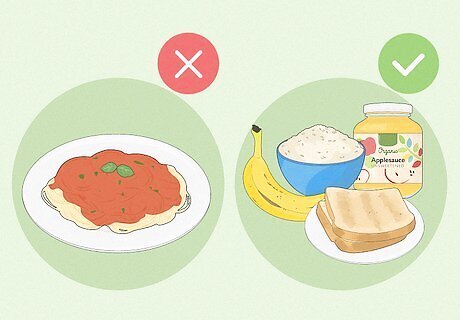
Avoid solid foods if you’re nauseous. If you are vomiting or nauseous, you should avoid solid foods for the first 24 hours. After this time, or when you can hold food down, stick with a bland diet. One such diet is the BRAT diet, which is a diet of bananas, rice, applesauce, and toast. You may also wish to eat soups, crackers, eggs, cereal, stews with soft meats and vegetables, and custards.
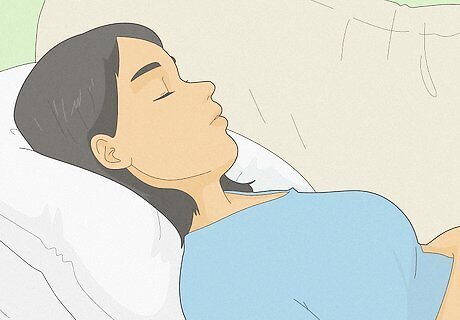
Rest. Make sure you get enough rest. This can help your body heal and fight off whatever is causing the traveler’s diarrhea. Likely you are already exhausted from your travels. The diarrhea is likely to make the fatigue worse. Get all the rest you can. If you are still traveling, try to take it easy for a day or two. Rest in your hotel and make sure you catch up on sleep and rehydrate. If are home, take a day off from work or school if you need to. This might also help you have the freedom to go to the toilet when you need to. If you can’t get out of work, just take it easy and slow. Don’t overdo it.
Treating Traveler’s Diarrhea Medically

Try OTC medications. You can use over-the-counter medications to treat the traveller’s diarrhea. You can use an anti-diarrhea medication, such as Immodium. Medicines containing diphenoxylate (like Lomotil or Lonox) can be useful if the diarrhea is debilitating. The anti-diarrhea medicine can make it easier for you to ride on buses and airplanes while you get over your traveler’s diarrhea. You can also take bismuth subsalicylate, better known as Pepto-Bismol, which can help calm your digestive system. You should understand that by taking these medications, you are actually lengthening the course of your illness. Every time you use the toilet, you are eliminating the agent that is causing your misery. These medicines stop you from going to the bathroom. Stop using these if you have abdominal pain or if your symptoms get worse. If this happens, call your physician. Do not give your child any adult anti-diarrhea medication (like Imodium) unless told to by your pediatrician. These can be dangerous for young children. For any OTC medication, follow the manufacturer’s directions exactly. More is not better. Do not use Pepto-Bismol with children, pregnant people, or anyone allergic to aspirin. For adults it is recommend to take 4 mg of Imodium at the first sign of diarrhea and then 2 mg if the diarrhea comes back. Remember that it may take up to 48 hours to take effect. For children, consult a doctor, as the medication is dosed upon age of the patient and may vary.
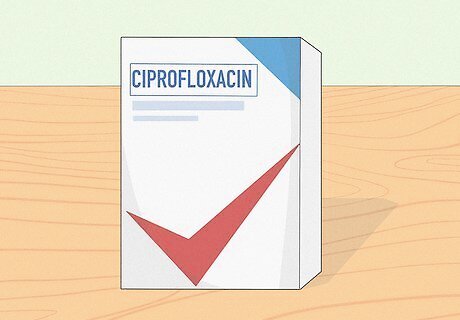
Take antibiotics for bacterial infections. For the most part, traveler’s diarrhea can be treated at home; however, for some people at risk of dehydration or at risk because of their overall health, antibiotics may be prescribed. Antibiotics commonly prescribed include: Trimethoprim-sulfamethoxazole (Bactrim DS), Ciprofloxacin (Cipro), Norfloxacin (Noroxin), Ofloxacin (Floxin), or Doxycycline (Vibramycin). The antibiotics you take may depend on where you go. You might be able to get antibiotics from your doctor before you go abroad so you can have them in case of traveler’s diarrhea.

See your doctor. Traveler’s diarrhea usually isn’t serious and only lasts for a few days; however, if you or your child have blood or mucus in your stool, vomiting that won’t stop, diarrhea that lasts longer than two to three days, a fever over 102°F (38.9°C), or you experience any abdominal or rectal pain, you should call your doctor right away. If any of this occurs, you may need antibiotics or other medications for parasites.
Understanding Traveler’s Diarrhea
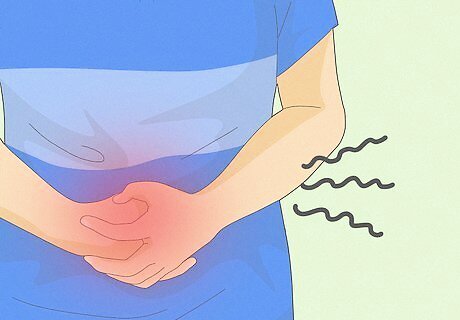
Recognize the symptoms of traveler’s diarrhea. Traveler’s diarrhea occurs when you drink water or eat food that has been contaminated with a bacteria, virus, or parasite. Because of this, the symptoms can start during your trip or right after your trip. The most common symptoms include: Fever Nausea Vomiting A sudden onset of needing to pass three or more loose stools in 24 hours A sudden or very urgent need to use the toilet Abdominal cramping
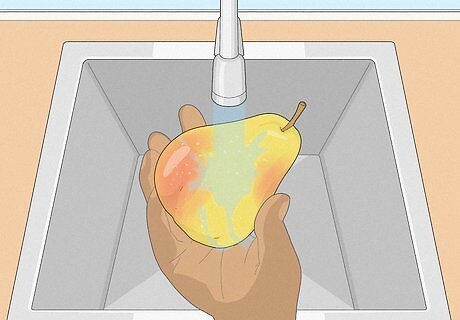
Identify risk factors for traveler’s diarrhea. There are certain conditions that lead to traveler’s diarrhea. Though you may not be able to eliminate all potential risks, you can be a more conscientious traveler. You should always eat food that is cooked and served fresh and hot. Only eat raw fruit and vegetables after washing them well and peeling them. Only drink water and other beverages from factory-sealed containers. Don’t eat ice or drink water not from a sealed bottle. Avoid eating any raw or undercooked food, including meat, vegetables, and seafood. Don’t eat any unpeeled fruit or unpasteurized dairy products.
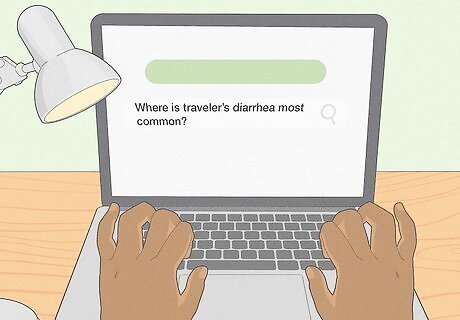
Learn where traveler’s diarrhea is most common. Traveler’s diarrhea is most common when visiting parts of Asia, the Middle East, Africa, Mexico, and both Central and South America. You may also get it in the Caribbean islands, southern Europe, and Israel. Generally people from those areas don’t get sick because their immune systems have developed immune defenses against the infectious agent while you haven’t because you are not from there. What causes traveler’s diarrhea in these areas are bacteria, viruses, and parasites. The most common bacteria causing traveler’s diarrhea are E.coli, Shigella, Salmonella, Campylobacter, and Vibrio species. The most common parasites are the Giardia, Entamoeba, and Cryptosporidium species, while the most common viral causes of traveler’s diarrhea are viruses from the Norovirus, Rotavirus and Enterovirus families.




















Comments
0 comment